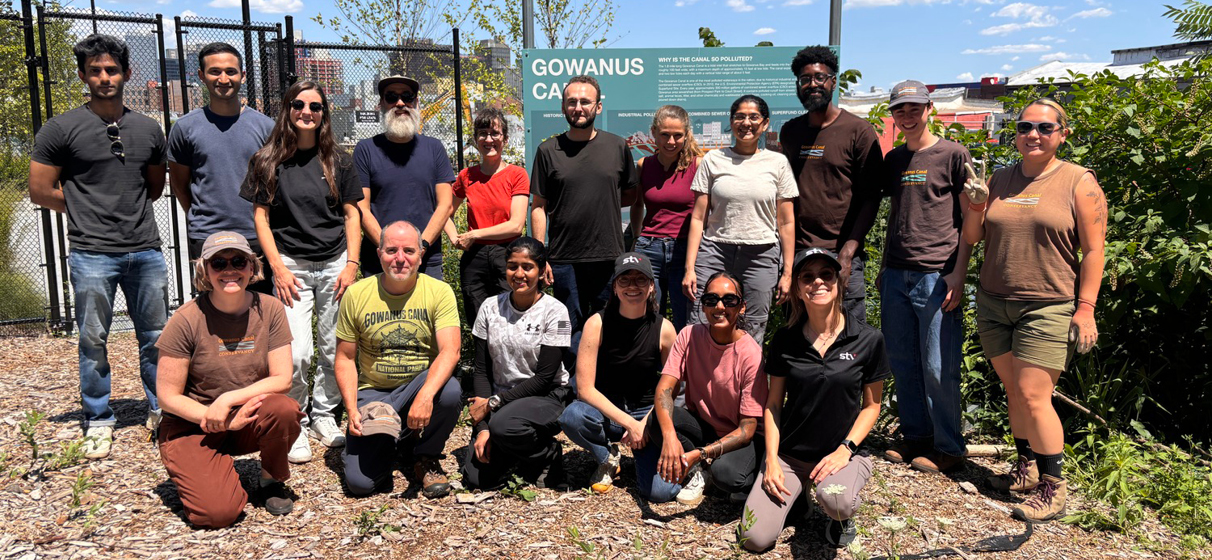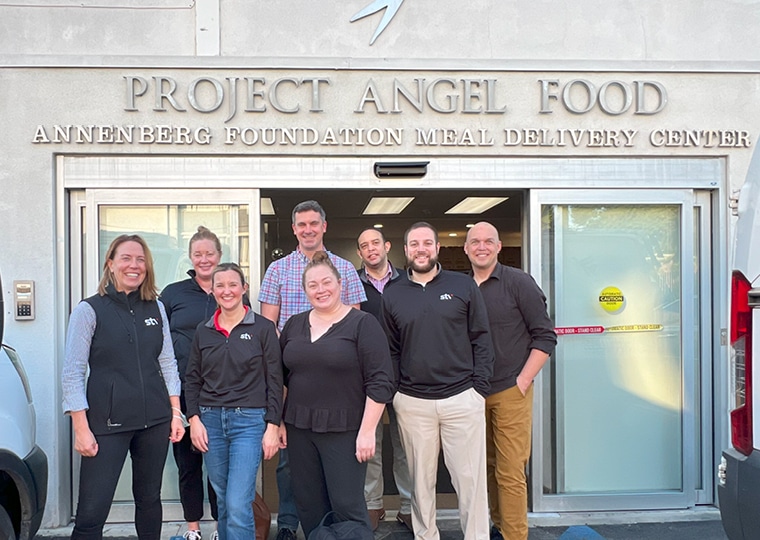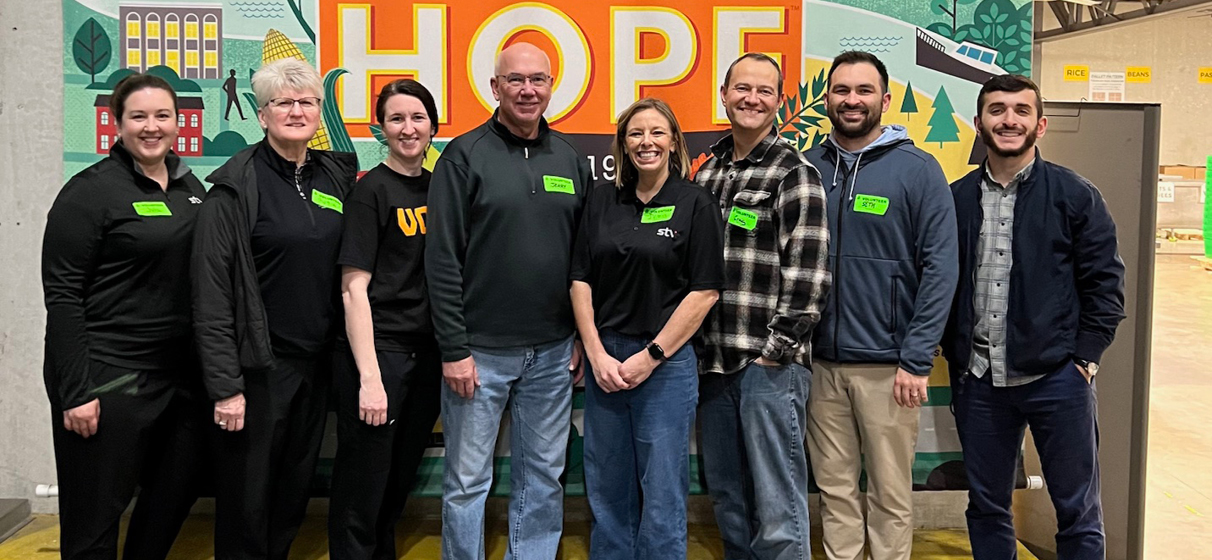To kick off Earth Month, STV’s leadership team volunteered at Brooklyn’s Gowanus Canal Conservancy’s (GCC) Lowlands Nursery under the 9th Street Bridge, home to the nonprofit’s stewardship and education programs.
After a guided tour of the area, the STV team rolled up their sleeves to help with potting up plants, mixing soil, composting and weeding – supporting GCC’s work to improve green infrastructure and reduce stormwater runoff in the Gowanus watershed.
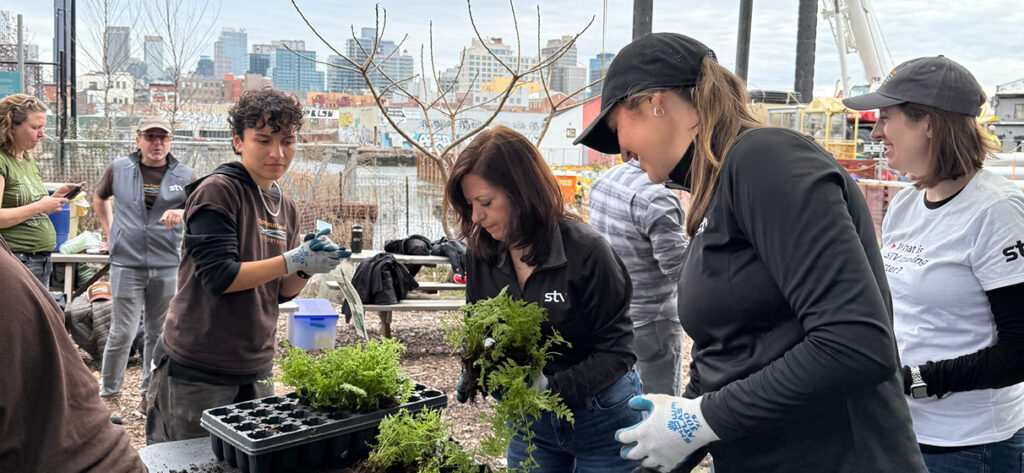
The Gowanus Canal is a historically polluted waterway designated in 2010 as a Superfund site and undergoing a major restoration effort. To help improve water quality and stormwater management, the New York City Department of Environmental Protection (NYCDEP) is installing storm sewer systems, combined sewer overflow (CSO) detention tanks and green infrastructure, such as bioswales and rain gardens. Yet, even with these investments, an estimated 115 million gallons of CSO will still enter the canal annually. It is a challenge that requires continued innovation, investment and stewardship. STV employees have been actively volunteering with GCC to ensure that future generations can experience a clean and ecologically diverse Gowanus Canal and watershed.
“For years, I’ve had the privilege of working with the GCC, an organization that truly embodies STV’s purpose to ‘make communities better,’” said Marcos Díaz González, president of the Transportation Northeast group at STV and past GCC Board Chair. “The transformation of the Gowanus Canal is a powerful example of what’s possible when advocacy, engineering and community stewardship come together. I’m proud of the role STV is playing in this ongoing effort.”
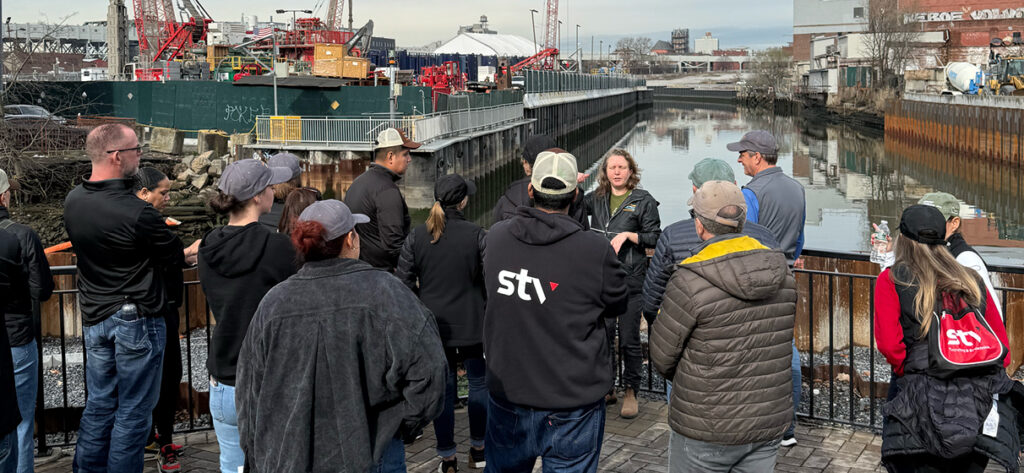
STV remains committed to supporting resilient communities through both volunteer efforts like the GCC’s Lowland Nursery and its expertise in developing sustainable, integrated water infrastructure solutions. STV is helping the New York Metropolitan region maximize its stormwater management and resource recovery needs for future climate events.
STV worked with the NYCDEP to implement upgrades and designs at the Red Hook Wastewater Resource Recovery Facility that will make the facility more resilient during future storm events. The team also designed a new 2.5-mile-long floodwall and green infrastructure for The Passaic Valley Sewerage Commission’s wastewater treatment plants in response to flooding from Superstorm Sandy.

